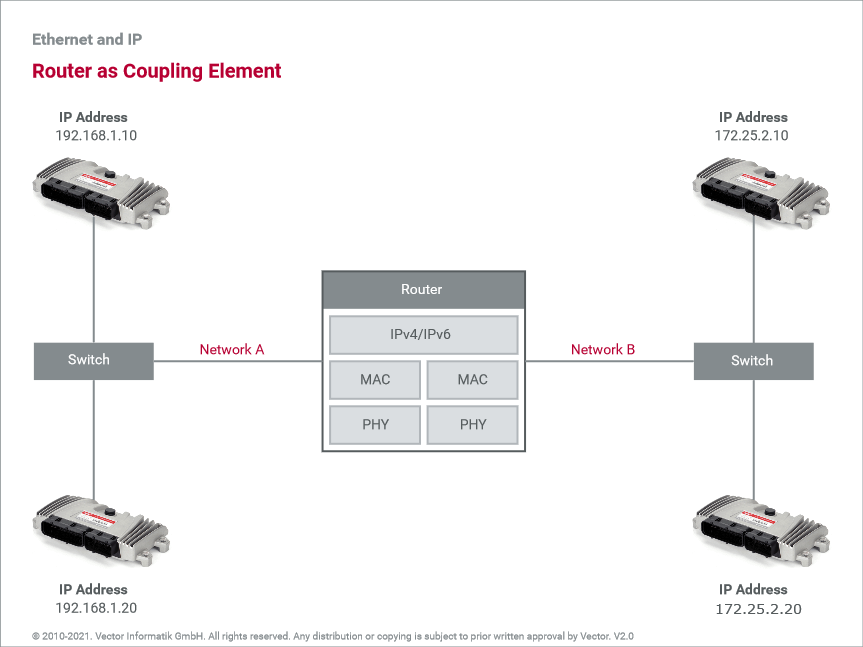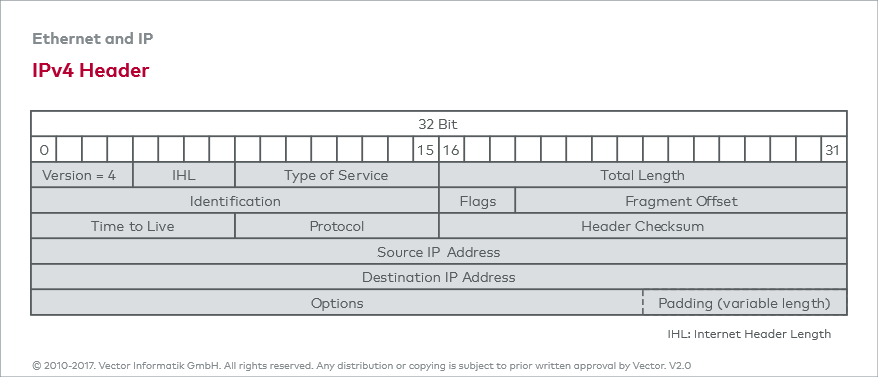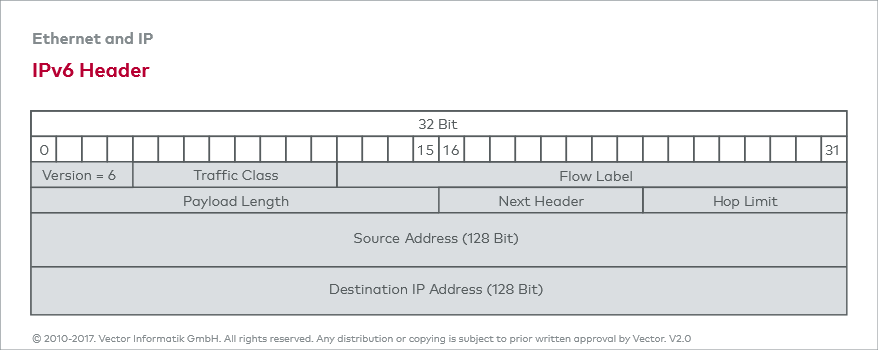Properties
Benefit
The Internet Protocol (IP) enables communication beyond the boundaries of a local network (LAN). The lower layers that perform the actual transport of data are abstracted for this. Thus, a destination node can be reached in the same network or across multiple networks (e.g. UMTS, WLAN, etc.) without having to adapt the transmitted packet.
IP packet
The standardized communication is realized with the help of the IP packet. This has a defined header with a destination address and a source address. A destination address can also be outside a local network (LAN). This enables any node to be addressed worldwide, in principle.
Router
In order to interconnect various networks, a router is used as a coupling element. A router is a node that belongs to more than one network and thus also has more than one IP address.
So that IP packets do not circulate on the Internet for an extended period under error conditions, a router counts down a parameter in the IP header (Time To Live for IPv4, Hop Limit for IPv6) when forwarding an IP packet from network to network. As soon as the value zero is reached, the packet is discarded by the next router.



